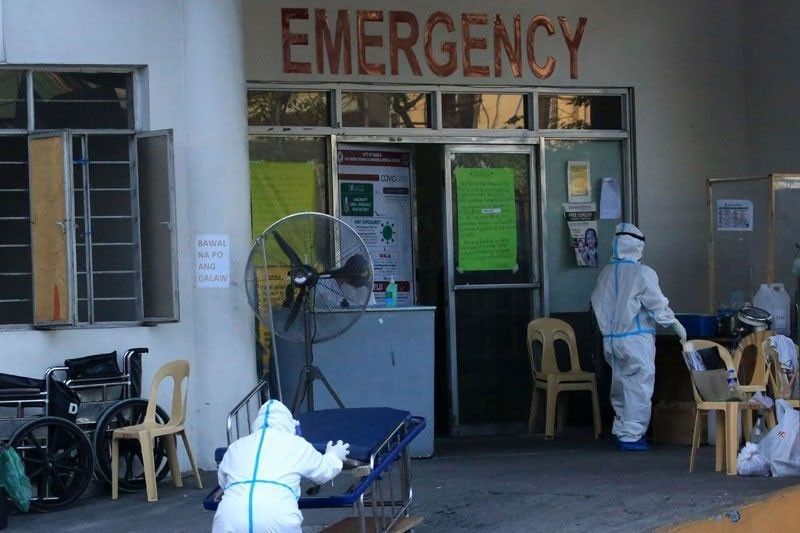Climate change threatens shutdown of hundreds of Philippine hospitals — report

MANILA, Philippines — Hundreds of hospitals in the Philippines could face partial or total shutdown from extreme weather events caused by climate change by the end of the century if fossil fuels are not phased out, a report by a climate risk analysis organization suggested.
The analysis of XDI found that 16,245 out of 200,216 hospitals worldwide—or one in 12 of them—are at high risk of damage from flooding, extreme wind, forest fire and cyclone by 2100 without a phase-out of fossil fuels, the largest contributors to climate change.
The Philippines, one of the countries most vulnerable to the impacts of the climate crisis, ranked seventh globally in terms of the number of high-risk hospitals. Around 550 or 26.7% of the 2,057 hospitals analyzed are at high risk of being shut down.
The main hazards posing risks in the Philippines were identified as riverine flooding, coastal inundation, and surface water flooding.
The report was released ahead of the first-ever “health day” at the COP28 climate summit in Dubai last Sunday, where topics under discussion included the unhealthy effects of climate change and the impacts of extreme weather events on health infrastructure.
Jit Sohal, the regional climate manager of Health Care Without Harm Southeast Asia, said the report highlights the need to fortify the country’s healthcare systems and facilities to protect people amid the climate crisis.
“Lack of access to healthcare services during and after a climate disaster can lead to immediate and long-term health consequences, including death, for the population it serves,” Sohal told Philstar.com.
Southeast Asian hospitals ‘most vulnerable’
According to the analysis, the risk of damage to hospitals from extreme weather events has risen by 41% since 1990, primarily because of planet-warming greenhouse gas emissions.
The report also found that medical facilities located on coastlines and near rivers are “most at risk” and that 71% of the high risk hospitals are in low- and middle-income countries such as the Philippines.
Currently, Southeast Asia has the highest percentage of hospitals at risk from climate-induced extreme weather events, with 10.76%. The analysis predicts that by the end of the century, the number of hospitals at risk in the region will increase to 18.4%
Indonesia has the highest number of high risk hospitals in Southeast Asia, with 696 by 2100.
“The global regions with the highest number and proportion of high risk hospitals—Southeast Asia, East Asia and South Asia—are also the regions where many countries’ health systems are already struggling. Vulnerable states could see a complete breakdown in the delivery of healthcare in places where hospitals fail,” XDI said.
The analysis pointed out that limiting global warming to 1.8 degrees Celsius through a rapid phase out of fossil fuels will halve the damage risk to hospital infrastructure compared to a high emissions scenario.
Climate-resilient health facilities
Sohal stressed that health facilities in the Philippines need to withstand an increasing number of climate impacts that are growing in frequency and severity.
“When the storm comes, they need to be the last buildings standing. When health facilities remain functional and accessible during extreme weather events or other climate-related disasters, they provide a vital lifeline for communities in need,” Sohal said.
Renzo Guinto, a physician and director of the planetary and global health program of St. Luke’s Medical Center, said that local government units should develop disaster risk reduction and management plans for the health sector.
“These initiatives must be localized, scaled up, so that all parts of the country are healthy and climate-resilient, and sustained over time since climate change is a long-term issue,” Guinto told Philstar.com.
At COP28, Health Secretary Teodoro Herbosa said that the Philippines has institutionalized DRRM in the health sector and started the greening of health facilities.
Herbosa also committed to strengthening climate change investments in health, and exploring the use of renewable energy technologies and the decarbonization of health facilities.
According to Sohal, the Philippines is moving in the “right direction” in terms of increasing its adaptive capacity and resilience to the impacts of climate change. She, however, pointed out that “we are running out of time to adapt.”
“If we really want to protect people’s health and ensure our health systems remain functional and able to provide care, we need to address the root cause of the crisis. The single most impactful health intervention we can do today is phasing out fossil fuels,” she said.
- Latest

























